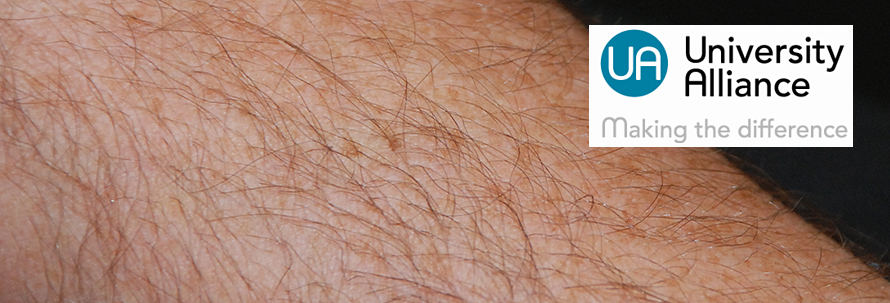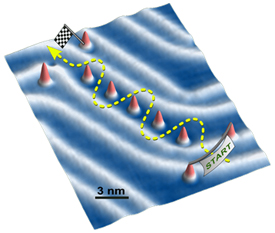The headline is a play on words. Lomiko Metals is in the graphene business (it owns graphite mines which can be turned into graphene and has part ownership of a number graphene-related businesses) and the material, graphene, could lead the way to transparent electronics. When you add an equity firm known as SeeThruEquity issuing a news release about Lomiko, well, the headline wrote itself.
SeeThruEquity, a leading New York City based independent equity research and corporate access firm focused on smallcap and microcap public companies, today announced that it has issued an update note on Lomiko Metals, Inc. (TSXV: LMR.V, OTCQX: LMRMF).
The note is available here: LMR December 2015 Update. SeeThruEquity is an approved equity research contributor on Thomson First Call, Capital IQ, FactSet, and Zack’s. The report will be available on these platforms. The firm also contributes its estimates to Thomson Estimates, the leading estimates platform on Wall Street.
Based in Vancouver, BC, Lomiko Metals, Inc. (TSXV: LMR.V. OTCQX: LMRMF, “Lomiko”) is an exploration-stage company engaged in the acquisition, exploration and development of resource properties that contain minerals for the new green economy, specifically graphite. In addition to developing high quality graphite plays, including the La Loutre Crystalline Flake Graphite Property and the Quatre Milles Graphite Properties in Quebec, Lomiko is pursuing synergistic growth opportunities in the technology and new energy markets, which leverage its position in the manufacturing graphene, a graphite derivative up to 200x stronger than structural steel that also possesses very high thermal and electrical conductivity properties. These opportunities include the 3D printing, lithium ion battery, LED drivers and power conversion products.
Promising results from infill drilling at La Loutre
As part of a drilling campaign leading to a 43-101 resource estimate, Lomiko intersected 21.55 meters of 11.58%, 57.95 meters of 3.36% including 6.10 meters of 13.66% and 28.75 meters at 4.44% flake graphite at the La Loutre. On December 4, 2015, Lomiko announced that they had intersected 37.40 meters of 4.41% including 10.25 meters of 5.62%, and 48.05 meters of 3.12% including 8.90 meters of 6.13% flake graphite at their 2,867.29 hectare La Loutre Crystalline Flake Graphite Property. A Drill Map is available on the Lomiko web site under quicklinks.
Lomiko management indicated that the results showed “excellent” data including near-surface, high grade flake graphite, helping further define the play’s potential. Lomiko acquired a 40% interest in this promising crystalline flake graphite play in September 2014, and has acquired another 40% interest since we initiated coverage on the company. As we indicated in our initiation of Lomiko, there are several long-term demand catalysts for high grade graphite, including from the lithium ion battery industry, automotive demand from projects similar to the Tesla Gigafactory — which promises to have 35GWh/year of production, as well as potential new applications of graphite derivative graphene, among others.
Launch of Spider Charger(TM) moving towards collaboration
Lomiko’s wholly owned subsidiary, Lomiko Technologies, appears to be nearing commercialization for its innovative new Spider Charger, which has been developed by the company as a result of technology acquired through Lomiko’s December 2014 licensing agreement with Megahertz Power Systems Ltd. The Spider Charger(TM) is an in-wall USB charging device that employs a sleek design while improving energy efficiency for customers and allowing up to eight electronic devices (two standard, 6 via USB ports) to charge safely at one time. Lomiko completed a prototype for the Spider Charger(TM) in November and has manufactured 250 units for use for demonstration with new potential commercial customers. There is clearly a large market potential for the Spider Charger(TM), which has applications for residential and commercial builders, airlines, schools, and businesses with clientele seeking charging stations for their portable electronic devices – such as coffee houses. Lomiko recently initiated a Kickstarter campaign to fund safety and green certifications for commercial use.
Maintain price target of C$0.19
We are maintaining our price target of C$0.19 for Lomiko Metals at this time. We see the company as an intriguing, speculative investment in the graphite and graphene markets.
Please review important disclosures at www.seethruequity.com.
About Lomiko Metals, Inc.
Lomiko Metals Inc. is a Canada-based, exploration-stage company. The Company is engaged in the acquisition, exploration and development of resource properties that contain minerals for the new green economy. Its mineral properties include the La Loutre, Lac Des Iles, Quatre Milles Graphite Properties and the Vines Lake property which all have had major mineral discoveries.
Lomiko also has a 100% interest in its wholly owned subsidiary Lomiko Technologies Inc., an investor in graphene technology and manufacturer of electronic products.
For more information, visit www.lomiko.com.
About Lomiko Technologies Inc.
Lomiko Technologies was established in April, 2014 and currently holds 4.4 million shares of Graphene 3D Lab (www.Graphene3DLab.com), 40% Of Graphene Energy Storage Devices (www.Graphene-ESD.com), and a license for the manufacture and sale of three products from Megahertz.
Lomiko Technology owns 4.4 million shares of Graphene 3D Lab (TSXV: GGG, OTCQB: GPHBF ), 40% of Graphene ESD Corp and has licenses to produce three electronic products.
About SeeThruEquity
SeeThruEquity is an equity research and corporate access firm focused on companies with less than $1 billion in market capitalization. The research is not paid for and is unbiased. The company does not conduct any investment banking or commission based business. SeeThruEquity is approved to contribute its research to Thomson One Analytics (First Call), Capital IQ, FactSet, Zacks, and distribute its research to its database of opt-in investors. The company also contributes its estimates to Thomson Estimates, the leading estimates platform on Wall Street.
For more information visit www.seethruequity.com.
Please note, I’m not endorsing either the analysis or Lomiko Metals. That said, Lomiko Metals has made some interesting moves in attempts to develop applications for graphene. It’s all very well to have deposits of graphite flakes that can be turned into graphene but if there’s no market for graphene (applications for it) then who cares about the deposits? So, good on Lomiko for its development efforts.
One final comment, for those who do not know, graphene is the focus of much international interest in a race to find applications that utilize it. For example, the European Union has a 1B Euro research fund (the Graphene Flagship) being disbursed over a 10 year period.

